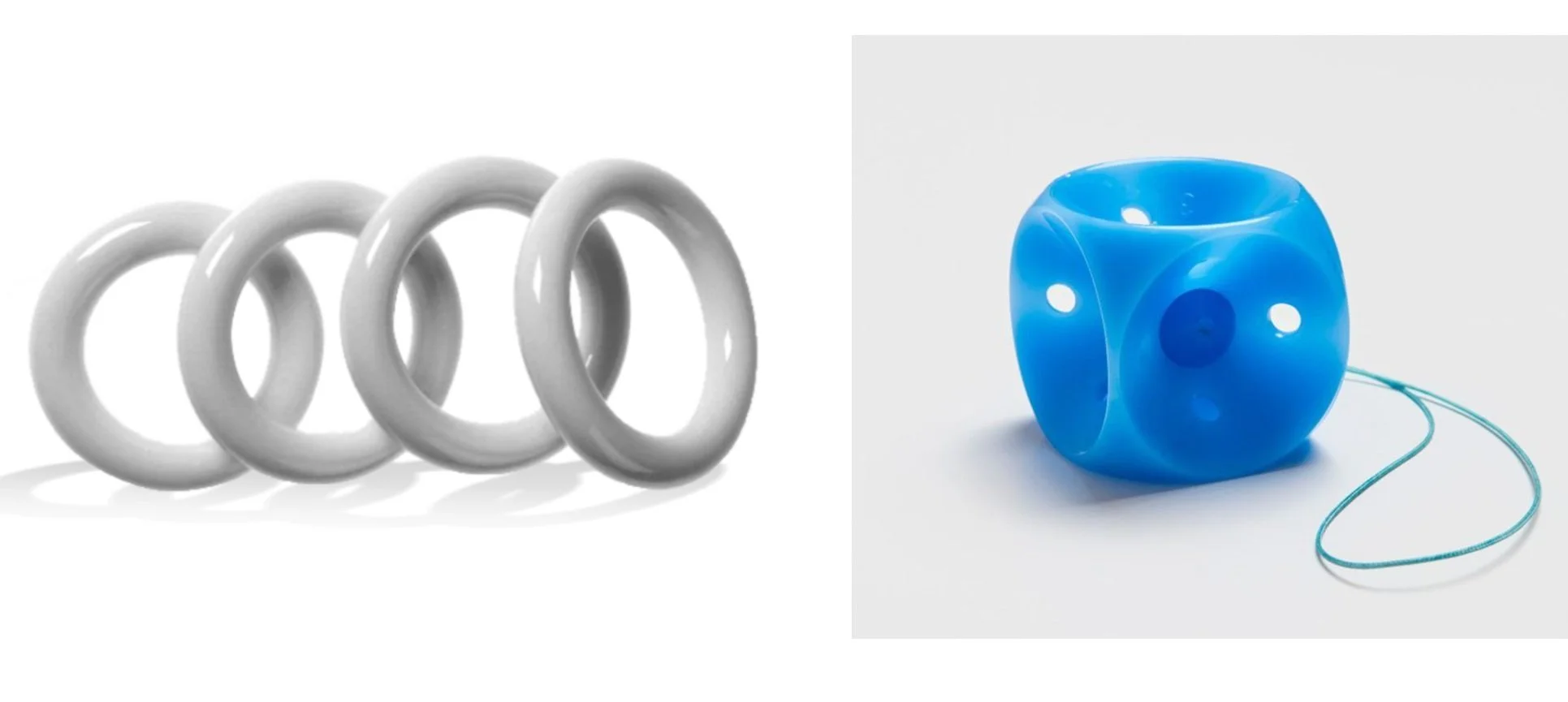
Pessary Fitting
What Is a Pessary?
A pessary is a medical device made from medical-grade silicone designed to be inserted into the vaginal canal. It is commonly used to help manage symptoms of Pelvic Organ Prolapse (POP) and can provide relief from urinary incontinence and feelings of heaviness inside the vagina. Pessaries come in various shapes and sizes to suit individual needs, depending on the type of prolapse and your activity levels. Some pessaries are removable and can be cleaned daily, while others can remain in place for up to 6 months.
Pessaries support the vaginal walls, especially during physical activities, and can help improve pelvic floor function. They can also be used as an interim solution for managing prolapse symptoms if you're awaiting surgery.
We are currently able to offer silicone ring and cube pessaries but can order other types of pessary if necessary.
What happens at a pessary fitting appointment?
Before booking a Pessary Fitting Appointment, you will need to have already had an assessment with a women’s health physiotherapist to confirm that you are suitable for a pessary. If you’re seeing a physiotherapist or medical professional from another clinic, we will need a report from them before you can proceed with the fitting.
At the initial fitting, your physiotherapist will:
Assess your symptoms and lifestyle through a series of health and medical questions.
Evaluate your general movements, breathing, and the muscle activity of your abdominal and pelvic floor muscles.
Conduct a vaginal examination to check the strength and endurance of your pelvic floor muscles and to assess the level of prolapse.
In some cases, a speculum may be used to inspect the vaginal walls for any atrophy (thinning of tissues), which might require vaginal oestrogen treatment before fitting.
Once the most suitable pessary type and size have been determined, it will be fitted, and adjustments may be made to ensure proper sizing. The fitting will be assessed in a standing position and may take a few attempts to ensure comfort and effectiveness. After the fitting, you will be asked to walk around and, if necessary, try activities like urination, running, or lifting. If you plan to participate in more intense activities, we recommend bringing your workout shoes.
If you are fitted with a removable pessary, you will be shown how to remove, insert, and clean it.
A follow-up appointment will be scheduled two weeks later to check the pessary, and you will need a further check-up in 4-6 months for pessary replacement..
It is important to know that the fitting appointment is more of a pessary trial as not all women will tolerate the use of a pessary.
Please note: You will be charged on top of your appointment fee for any pessary trialled within the session.
What are the Complications / Side Effects of having a Pessary?
While using a pessary, some women may experience the following:
Pain or discomfort from the fitting: This can be checked during your follow-up appointment.
Irritation or soreness in the vaginal tissues, which can occasionally lead to small tears during fitting, causing minor bleeding. This typically heals within a few days.
Difficulty passing urine or bowel movements: If this occurs, the pessary may be too large. You can remove it if you are self-managing, or we can fit a smaller size at your follow-up.
Increased vaginal discharge: This is common but may indicate infection if the discharge becomes discoloured or odorous. In such cases, consult your GP or visit the Sexual Health Clinic.
What happens at the follow up appointment?
The follow-up appointment will take up to 45 minutes. During this appointment, your physiotherapist will:
Ask about your experience with the pessary and address any concerns.
Perform another vaginal examination to assess the fit and health of the vaginal tissues.
Check any pelvic floor or core exercises you’ve been given to ensure they’re still effective with the pessary in place.
Frequently Asked Questions
Can I Have Sex with a Pessary?
Yes, you can have sexual intercourse with some types of pessaries, which will be discussed during your fitting. If your pessary is removable, you can take it out before sex.
Can I Use a Pessary if I’m Pregnant?
Only ring pessaries are used during pregnancy. If you are pregnant and already using a pessary, or if you plan to become pregnant, please book an appointment with your physiotherapist to discuss your options.
How Do I Clean My Pessary?
Removable pessaries should be cleaned with soap and water and air-dried to avoid infection. I
If you are not removing your pessary, there is no need to clean it regularly.
Can I Have a Coil (IUD) Fitted with a Pessary?
If you’re planning to have a coil fitted, you will need to remove the pessary before the procedure. If you already have a coil in place, you can continue using a pessary.
Do I Have to Remove My Pessary During My Menstrual Cycle?
Depending on the type of pessary, you may want to remove it during your period. If it is a ring pessary, you can continue using tampons or menstrual products. This will be discussed with your physiotherapist during your fitting.
What Happens If My Pessary Falls Out?
If the pessary falls out, it may be too small. You will be shown how to reinsert it if necessary, or a new size can be fitted at your follow-up appointment.

